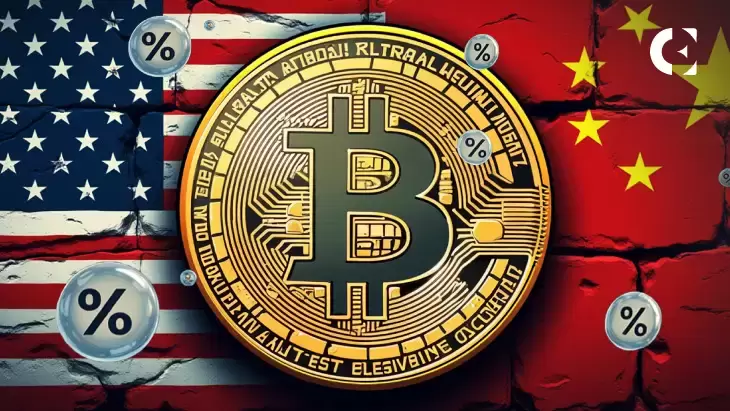 |
|
 |
|
 |
|
 |
|
 |
|
 |
|
 |
|
 |
|
 |
|
 |
|
 |
|
 |
|
 |
|
 |
|
 |
|
Cryptocurrency News Articles
DePIN Energy Protocols: A New Era of Decentralized Energy Networks
Nov 17, 2024 at 11:28 pm
The energy landscape is undergoing a profound transformation, with global electricity demand expected to nearly double by 2040. This puts pressure on the aging centralized grid.

The energy landscape is undergoing a profound transformation, with global electricity demand expected to nearly double by 2040. This puts pressure on the aging centralized grid. The traditional unidirectional flow of electricity (from large centralized plants to end-users) can no longer keep pace with the complexity of modern energy demands, especially as renewable and decentralized energy resources (DER) become an indispensable part of the energy mix.
This year is a critical one for energy investment, with global spending projected to exceed $3 trillion, of which about $2 trillion will be allocated to clean energy technologies and infrastructure. Investments in renewable energy, grid upgrades, and storage are expected to surpass total spending on oil, gas, and coal for the first time. By 2030, renewable energy is expected to account for nearly 20% of global energy consumption, up from 13% in 2023, primarily due to advancements in solar and wind energy.
The Role of Decentralized Energy Resources (DER)
Decentralized energy resources (DER), such as solar, wind, battery storage, and demand response technologies, are reshaping the energy landscape by enabling decentralized energy production and consumption. These innovations challenge the traditional centralized radial model and necessitate a transition to a decentralized bidirectional grid to accommodate the expanding network of small producers and consumers.
While DER offers greater efficiency and resilience, its integration brings new complexities to grid management. The traditional grid lacks the flexibility to handle dynamic interactions within multiple energy networks, especially the intermittency of renewable energy.
Blockchain and DePIN: Transformative Solutions
Blockchain technology and DePIN provide a critical framework for decentralized energy systems. The transparency and peer-to-peer energy trading capabilities of blockchain enable energy producers and consumers to participate in more efficient and equitable markets. Through smart contracts and tokenization, transactions are streamlined, costs are reduced, and the generation and consumption of renewable energy are incentivized. Additionally, the real-time data capabilities of blockchain enhance grid reliability by achieving precise supply-demand balance.
Decentralizing the grid is key to driving DER innovation. However, modernizing the grid remains a challenge, hindered by traditional infrastructure, insufficient real-time data, and limited automation. The entire industry recognizes the need for transformation to meet growing energy demands, enhance resilience, and extend services to underserved areas. Decentralized solutions address challenges related to supply-demand balance, grid reliability, and rural access. However, achieving scalable impact requires significant capital and regulatory coordination.
The following will explore several key energy protocols that embody notable progress in this decentralized energy landscape.
Project Zero (Developed by Fuse)
Focus: A decentralized renewable energy network with integrated DER services
Core Team: Alan Chang (CEO), Charles Orr (COO)
Funding (Total Raised: $90 million):
Fuse, co-founded by former Revolut executives Alan Chang and Charles Orr, is addressing the energy crisis through a vertically integrated, data-intensive renewable energy approach. Leveraging their experience in scaling Revolut, Chang and Orr established Fuse to operate utility-scale solar and wind farms, DER installation businesses, and serve tens of thousands of households in the UK as a regulated electricity supplier.
Key Data:
Fuse addresses inefficiencies in the traditional energy stack by establishing real-time data monitoring and vertically integrating energy production, distribution, and retail. Through Project Zero, Fuse incentivizes participants to shift energy consumption towards renewables, helping stabilize the grid and promote DER adoption. By integrating DER, Fuse can also operate as a virtual power plant (VPP), providing grid services that can generate up to $100,000 in revenue per megawatt while optimizing profitability alongside renewable energy integration.
Fuse combines advanced data collection, real-time monitoring, and a vertically integrated model to surpass traditional utilities. By leveraging DER, Project Zero, and real-time analytics, Fuse is committed to delivering cleaner, cheaper energy while transforming the energy retail sector into a consumer-responsive ecosystem.
Daylight
Focus: Decentralized energy protocol
Core Team: Jason Badeaux (CEO), Dallas Griffin (COO), Udit Patel (CTO), Evan Caron (CSO).
Funding:
Series A: July 31, 2024; Amount Raised: $9 million; Investors: Andreessen Horowitz (lead), Framework Ventures, Lattice, Escape Velocity (EV3), Lerer Hippeau.
Daylight is a decentralized protocol focused on transforming the energy grid through the use of DER. Currently, DER (such as solar panels, smart thermostats, and batteries) operates in a decentralized manner with little incentive for individual owners to actively contribute to grid stability. Daylight bridges this gap by integrating DER data, which energy companies can purchase to improve grid management.
Initially, Daylight will collect and sell real-time DER data to energy companies, helping them optimize grid performance. In the long term, the protocol aims to enable users to form virtual power plants (VPP) from connected DER. These VPPs act as integrated energy sources that can feed back into
Disclaimer:info@kdj.com
The information provided is not trading advice. kdj.com does not assume any responsibility for any investments made based on the information provided in this article. Cryptocurrencies are highly volatile and it is highly recommended that you invest with caution after thorough research!
If you believe that the content used on this website infringes your copyright, please contact us immediately (info@kdj.com) and we will delete it promptly.
-

-

-

- The Crypto Market's Been Cooking Up Fresh Narratives This Year—from Bitcoin Crossing All-Time Highs to Solana's Gasless Memecoin Mania
- Apr 12, 2025 at 12:30 pm
- The crypto market's been cooking up fresh narratives this year—from Bitcoin crossing all-time highs to Solana's gasless memecoin mania. But here's what's flying under the radar
-

-

- Today, the broader cryptocurrency market experienced a significant sell-off, erasing $314.69 million in liquidations.
- Apr 12, 2025 at 12:25 pm
- Today, the broader cryptocurrency market experienced a significant sell-off, erasing $314.69 million in liquidations. According to metrics shared by Phoenix Group, a total of 108138 traders were liquidated
-

-

-

-




















![Crypto Otaku - CRYPTO CHAOS! 83K BITCOIN! CRYPTO RALLY!! XCN , JASMY , SWFTC LEAD!!! [Episode 228] Crypto Otaku - CRYPTO CHAOS! 83K BITCOIN! CRYPTO RALLY!! XCN , JASMY , SWFTC LEAD!!! [Episode 228]](/uploads/2025/04/12/cryptocurrencies-news/videos/crypto-otaku-crypto-chaos-k-bitcoin-crypto-rally-xcn-jasmy-swftc-lead-episode/image-1.webp)









































